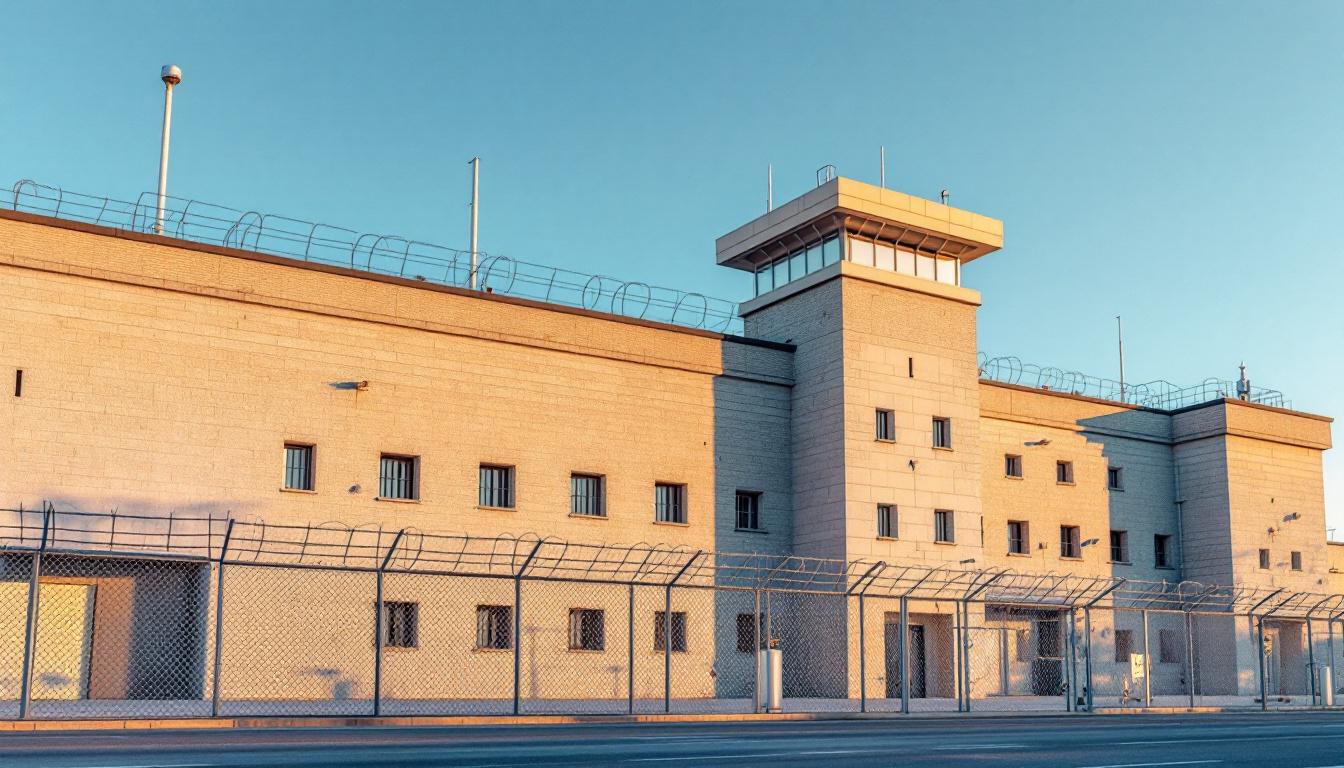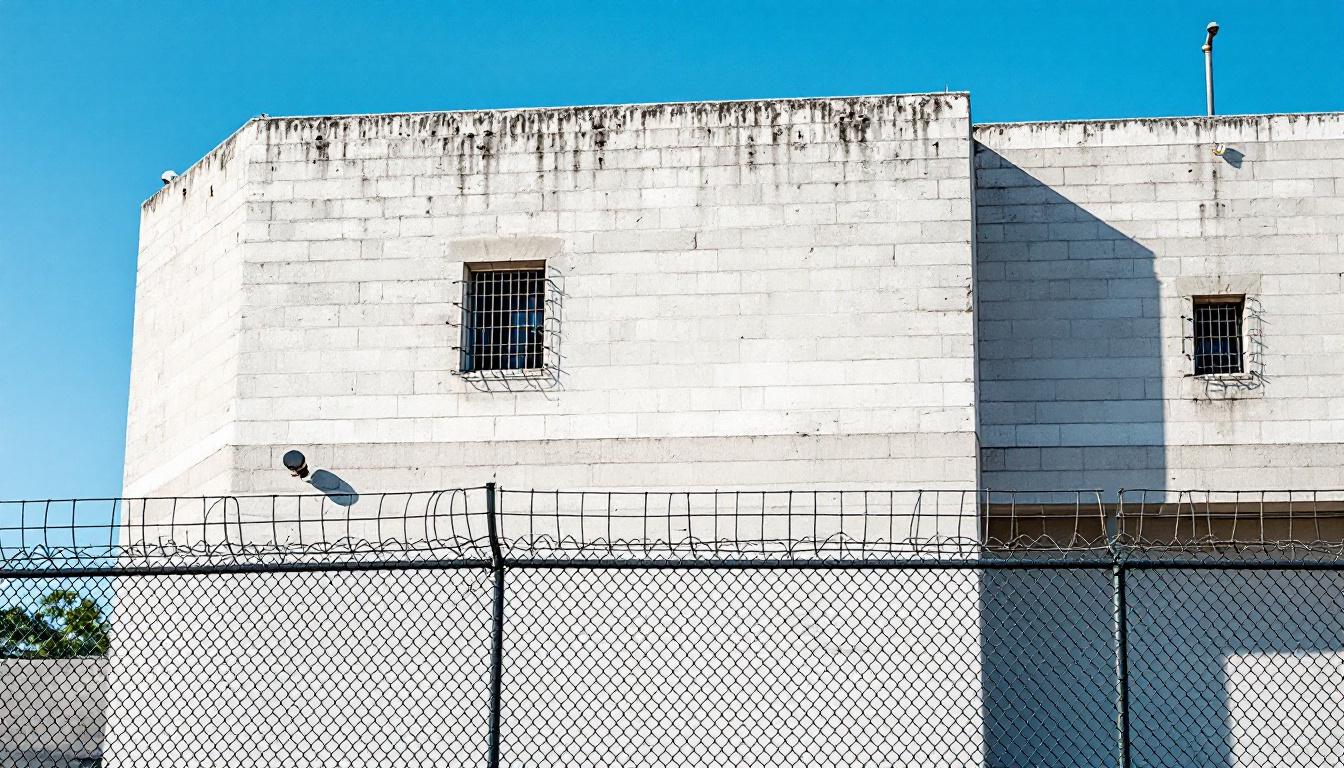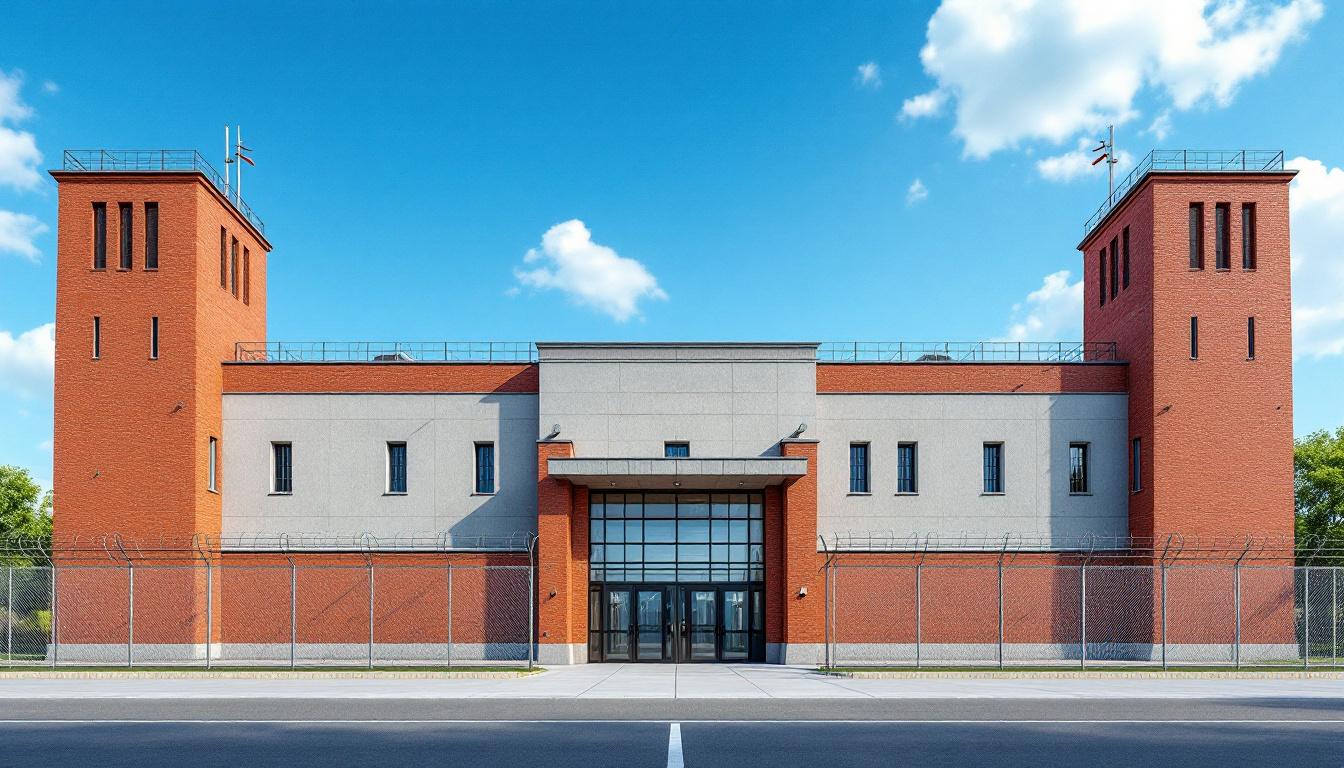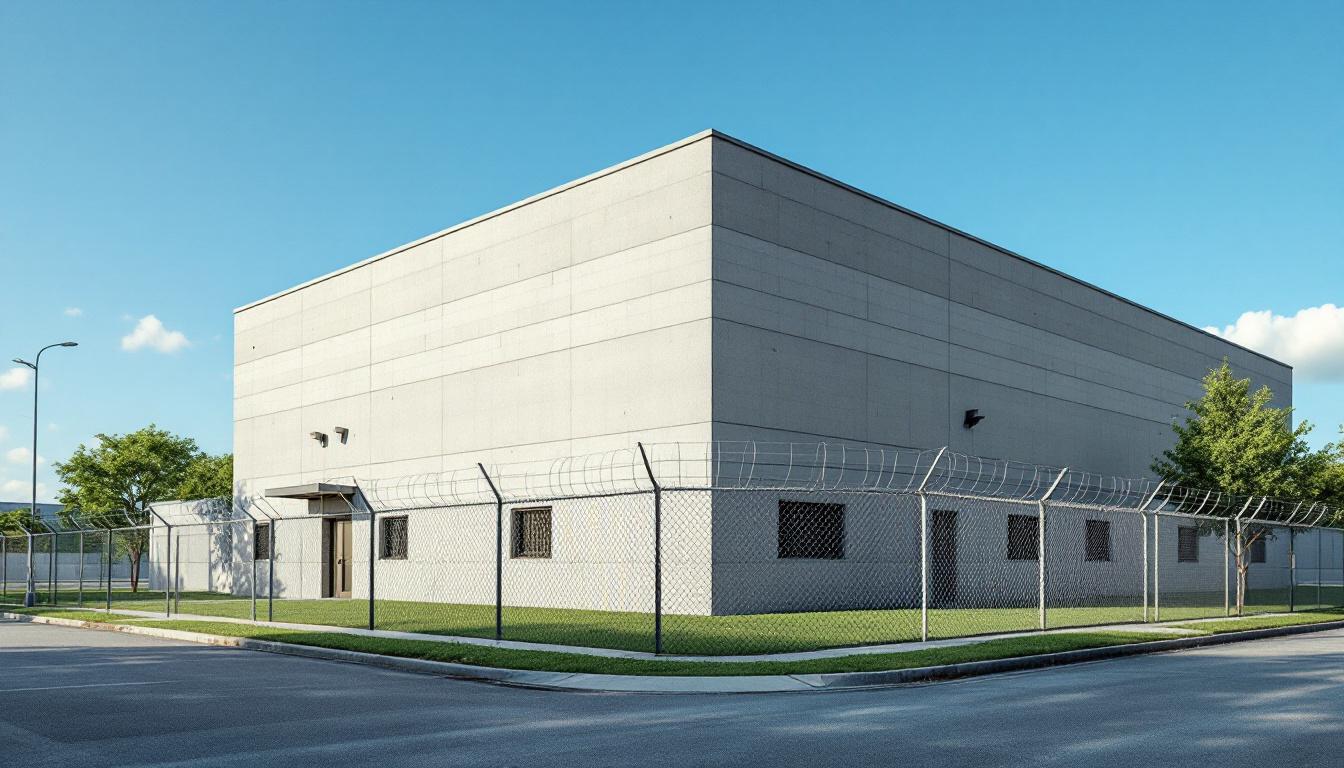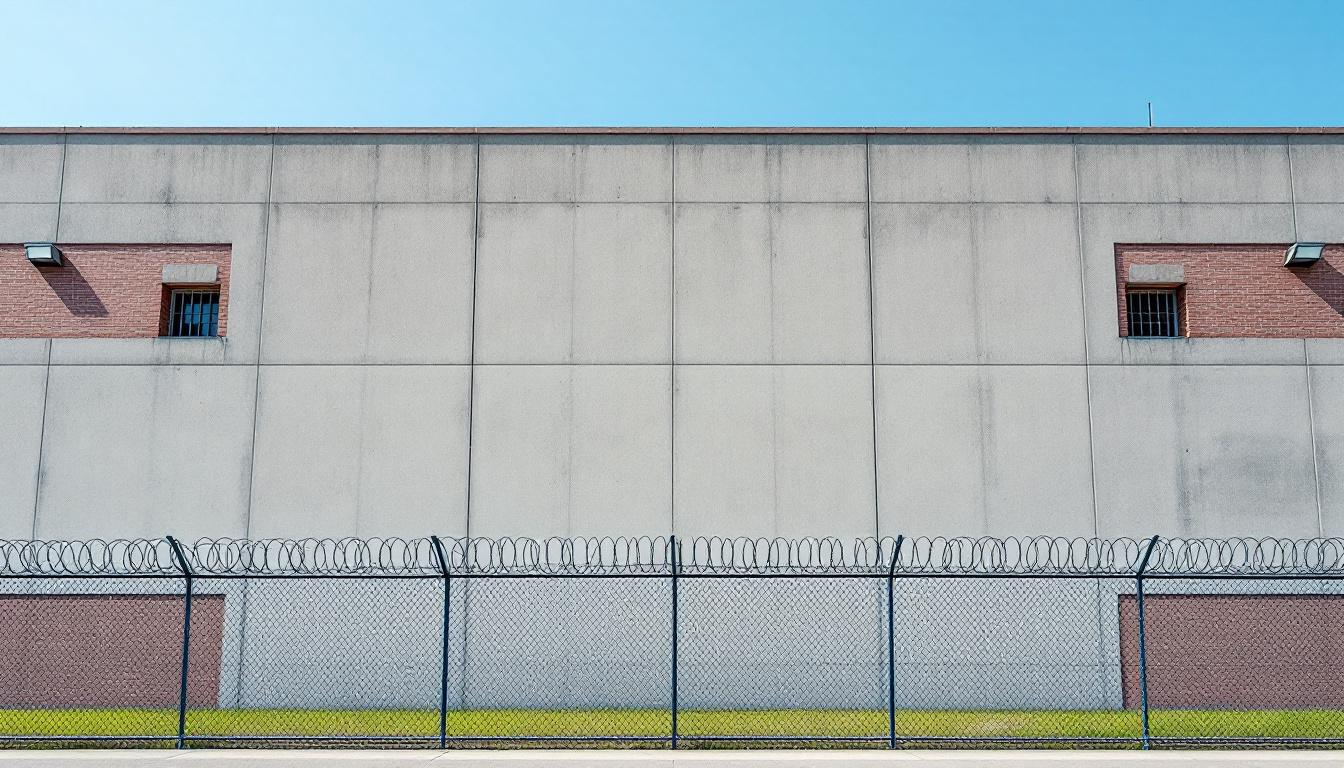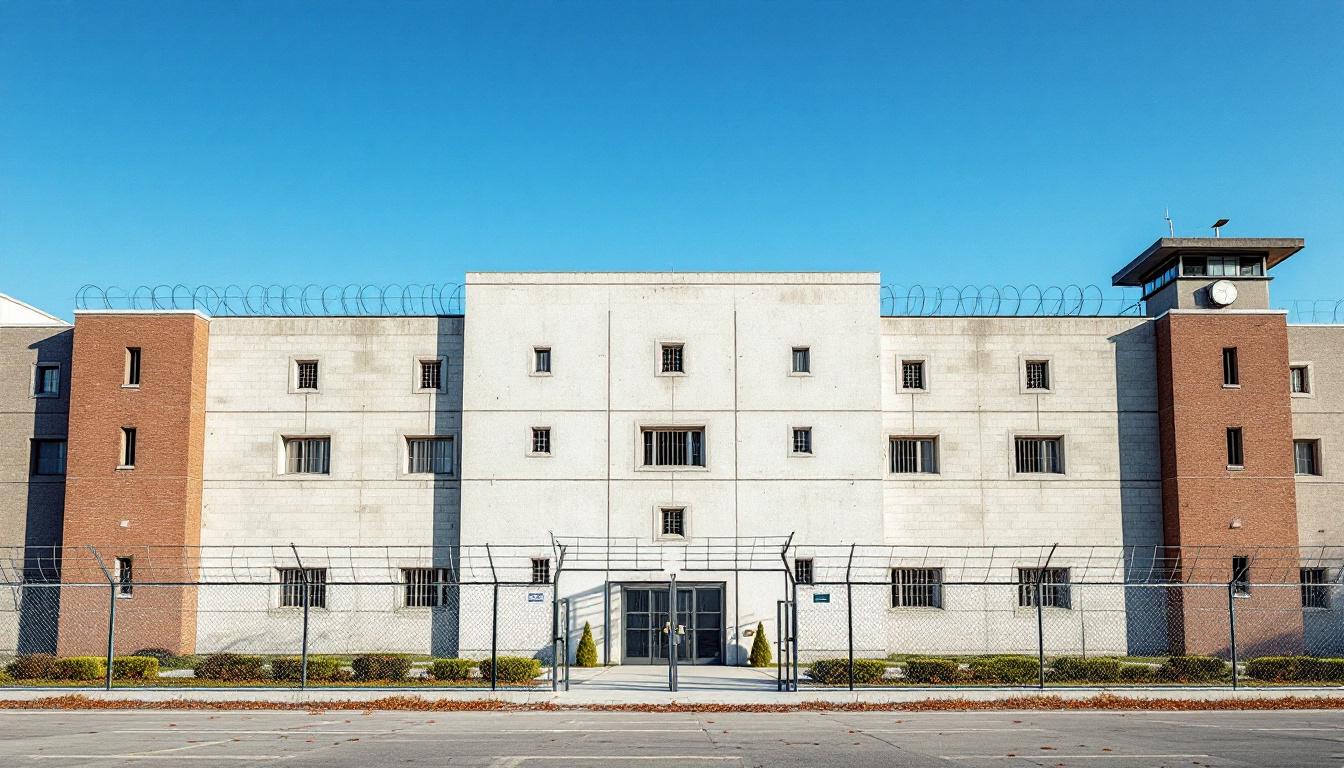
Quick Navigation
How to contact an inmate at South Dakota State Penitentiary
This comprehensive guide will walk you through how to connect with an inmate at South Dakota State Penitentiary. Follow the steps below to find an inmate and send letters and photos:
- Search for the inmate using our search tool below
- Create your account or log in to Penmate
- Write your message (up to 6,000 characters)
- Send instantly - inmates receive printed copies daily
Find an Inmate
Search for an inmate to start communicating today
Tip: You can search by first name, last name, or inmate ID number
To contact a person at South Dakota State Penitentiary start by searching for the person on the official facility website. Perform a search by following these steps:
- Step 1: Enter their first name and last name into the search form and click "Search"
- Step 2: Locate their inmate record
- Step 3: Write down their Inmate ID and any housing information provided
Important! Be sure to enter the person's full name. Nicknames should not be used.
How to Send Messages to Inmates

You can use your phone or computer to send emails, letters, and photos to an inmate. Messages are sent electronically to inmate tablets or kiosks at the facility. If you would like to send a message, start by searching for an inmate at South Dakota State Penitentiary.
Sending Photos and Postcards

A great way to send love and support to a loved one at South Dakota State Penitentiary is to send photos and postcards. It only takes a few minutes to send photos from your phone and it makes a huge difference. You can also mail postcards with words of support and inspiration, or design your own postcard for special moments like birthdays and holidays.
Important! Be sure not to send any explicit photos or they may not be approved by the facility. You can also use a photo printing app like Penmate to make sure your photos are printed at the correct size (4x6 or 3x5) and are mailed according to the rules and regulations of South Dakota State Penitentiary.
Frequently asked questions about South Dakota State Penitentiary
-
How long does it take to deliver a message?
If you're sending an email message your letter is usually delivered within 24-48 hours. For messages sent via mail you should expect delivery within 3-7 days. All messages will need be approved by South Dakota State Penitentiary.
-
How much does it cost to send a message to South Dakota State Penitentiary?
You can send a message free using your phone or mail a message via USPS for the price of a $0.60 stamp and envelope. You can also purchase credits or e-stamps from services starting at $1.99.
-
What services can I use to contact an inmate at South Dakota State Penitentiary?
Penmate
You can use Penmate to send letters and photos to an inmate from your phone. It's an easy way to stay in touch during your loved one's incarceration. Use the inmate locator to find an inmate's location and contact information, then you can send messages within a few minutes.
Securus messaging
Securus may be another option for communicating with an inmate at South Dakota State Penitentiary. You can create a friends and family account and purchase credits to send messages. All messages will be reviewed and must be approved by the facility.
JPay
Some county jails and state prisons may support sending messages with JPay. You must register an account with the system, find your loved one, and purchase stamps to send messages. For some locations you can also attach photos.
Smart Jail Mail
You may also check if Smart Jail Mail is available at South Dakota State Penitentiary. Smart Jail Mail is operated by Smart Communications and has contracted with some state and county jails. After purchasing credits, your messages and photos are sent to the facility, printed out, and then handed out to your loved one.
-
What is the mailing address of South Dakota State Penitentiary?
Mailing address:
South Dakota State Penitentiary
1600 North Dr
Sioux Falls, SD 57104
Phone: (605) 367-5051 -
What are the visiting hours at South Dakota State Penitentiary?
Visiting hours at South Dakota State Penitentiary vary by housing unit and security level. Generally, visits are scheduled on weekends and holidays, with some facilities offering weekday visits. Contact the facility directly at (605) 367-5051 or check their website for the current visiting schedule. Visits typically last 30-60 minutes and must be scheduled in advance.
-
What items are prohibited when sending mail to South Dakota State Penitentiary?
Prohibited items typically include: cash, personal checks, stamps, stickers, glitter, glue, tape, staples, paperclips, polaroid photos, musical or blank greeting cards, hardcover books, magazines with staples, and any items containing metal or electronics. Only send letters on plain white paper with blue or black ink. Photos must be printed on regular photo paper (no Polaroids). Always check with South Dakota State Penitentiary for their specific mail policies.
-
How do I send money to an inmate at South Dakota State Penitentiary?
You can send money to an inmate at South Dakota State Penitentiary through several methods: 1) Online using JPay, Access Corrections, or the facility's approved vendor, 2) Money orders mailed directly to the facility with the inmate's name and ID number, 3) Kiosks located in the facility lobby, or 4) Over the phone using a credit or debit card. Fees vary by method, typically ranging from $2.95 to $11.95 per transaction.
-
Can I schedule a video visit with an inmate at South Dakota State Penitentiary?
Many facilities now offer video visitation as an alternative to in-person visits. At South Dakota State Penitentiary, video visits may be available through services like Penmate, Securus Video Connect, GTL, or ICSolutions. Video visits typically cost $10-20 for 20-30 minutes and must be scheduled in advance. You'll need a computer or smartphone with a camera and reliable internet connection. Contact the facility for their specific video visitation policies and approved vendors.
-
What identification do I need to visit an inmate at South Dakota State Penitentiary?
All visitors must present valid government-issued photo identification such as a driver's license, state ID, passport, or military ID. Minors must be accompanied by a parent or legal guardian who can provide the minor's birth certificate. Some facilities require visitors to be on the inmate's approved visitation list, which may require a background check. Contact South Dakota State Penitentiary for specific ID requirements and visitor approval procedures.
-
How can I find out an inmate's release date?
To find an inmate's release date at South Dakota State Penitentiary, you can: 1) Use the online inmate search tool if available, 2) Call the facility's records department, 3) Contact the inmate's case manager or counselor, or 4) Have the inmate provide this information during a call or visit. For privacy reasons, some facilities only release this information to immediate family members.
Facility Overview
Contact Information
South Dakota State Penitentiary1600 North Dr
Sioux Falls, SD 57104
Phone: (605) 367-5051
Official Website

About South Dakota State Penitentiary
Operating as a Level III medium custody facility, Mike Durfee State Prison serves the state’s correctional needs from its comprehensive location on the former University of South Dakota at Springfield campus. The facility accommodates primarily medium-custody male offenders and extends its supervision to include minimum security centers in both Yankton and Rapid City, demonstrating its role in South Dakota’s broader correctional system.
Based in Springfield, South Dakota, this institution emerged from legislative action in 1984 when the state closed the university campus and authorized its conversion to correctional use. The facility opened in December 1984, initially housing female offenders before transitioning to a co-educational institution in January 1985. Following the opening of the Herm Solem Public Safety Center in Pierre in 1997, the facility became an all-male institution and was later renamed in 1999 to honor Mike Durfee, a former Deputy Director of the South Dakota Department of Corrections who had connections to the original university campus.
The prison typically offers various programs and services common to medium-security facilities, including vocational industries and work opportunities such as the Governor’s House Program through the South Dakota Housing Development Authority. Located at 1412 Wood Street in Springfield, the facility operates under the oversight of the South Dakota Department of Corrections and may provide educational, rehabilitative, and reentry services designed to support offender rehabilitation and successful community reintegration.
Programs & Services
The Governor’s House Program stands as a notable opportunity at Mike Durfee State Prison, allowing eligible individuals to contribute to the South Dakota Housing Development Authority while developing valuable construction and maintenance skills. This work program, conducted on the facility grounds, provides hands-on experience that may support successful reintegration into the community. The facility’s vocational industries component typically expands these opportunities, offering additional skill-building programs that prepare individuals for employment upon release.
As a Level III facility primarily housing medium-custody individuals, Mike Durfee State Prison may offer educational services that could include adult basic education, GED preparation, and vocational training programs. The facility often provides counseling services addressing substance abuse, anger management, and other behavioral programs designed to support rehabilitation. Mental health services and medical care are typically available to meet the diverse needs of the population.
Support services at the facility may include library access, recreational activities, and religious services that help individuals maintain connections to their communities and personal development goals. The facility’s visitation program allows for family contact, which research suggests plays an important role in successful reintegration. Additionally, pre-release planning services are often provided to help individuals prepare for their transition back to the community, potentially including assistance with housing, employment, and continuing education opportunities.
Daily Life & Visitation

At Mike Durfee State Prison, the structured environment reflects its classification as a Level III facility housing primarily medium custody offenders. The institution, located on the former University of South Dakota at Springfield campus, maintains a regimented schedule that balances security protocols with rehabilitation opportunities. Residents typically begin their day with early morning counts and meal service, followed by work assignments that may include positions within the facility or participation in vocational industries programs operated on the grounds.
The facility’s visitation schedule provides important connection opportunities for families and friends, though specific visiting hours and procedures are outlined in the institution’s guidelines. Communication with the outside world typically includes monitored phone calls and correspondence, helping residents maintain relationships that are crucial for successful reintegration. Some offenders may qualify for specialized programs such as the Governor’s House Program, which operates as part of the South Dakota Housing Development Authority and provides valuable work experience while serving their sentences.
Living conditions at MDSP reflect the facility’s medium security classification, with housing arrangements designed to balance safety and basic comfort. The campus setting, with its origins as a university, may offer a somewhat different physical environment compared to traditional correctional facilities. Residents generally follow a structured daily routine that includes meals, work assignments, educational opportunities, and recreational time, all within the framework of the institution’s security protocols and rehabilitation goals.
Ready to Connect?
Start communicating with your loved one today
Search for an Inmate

